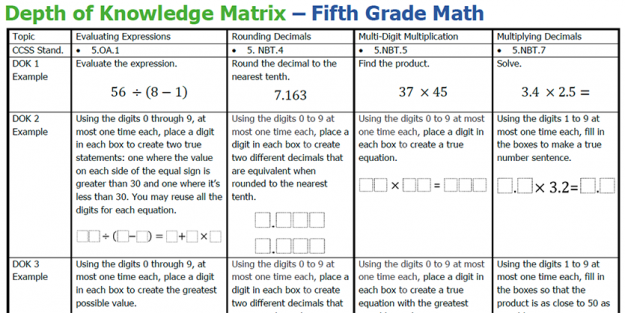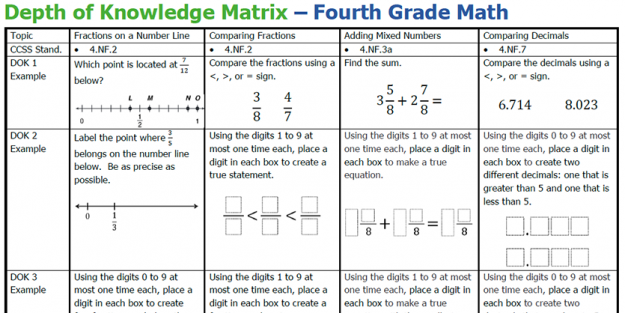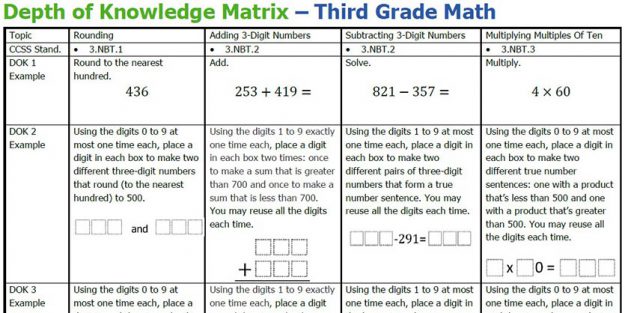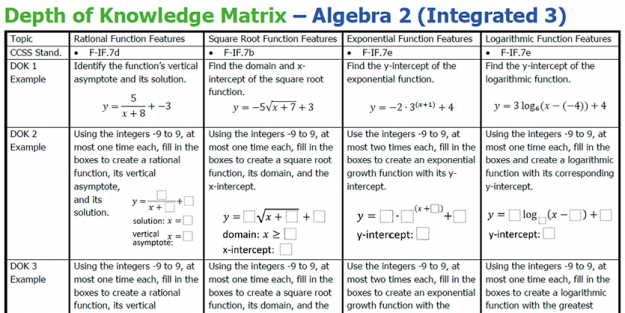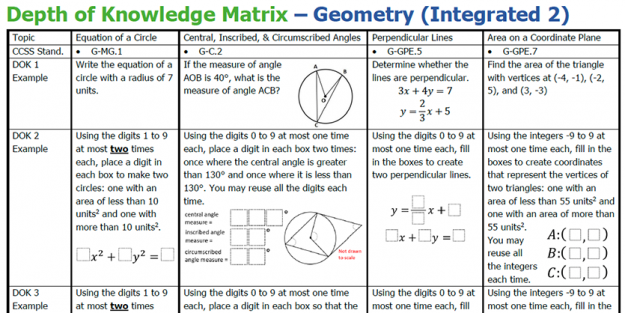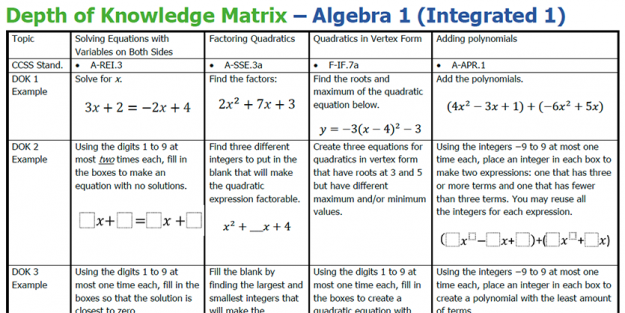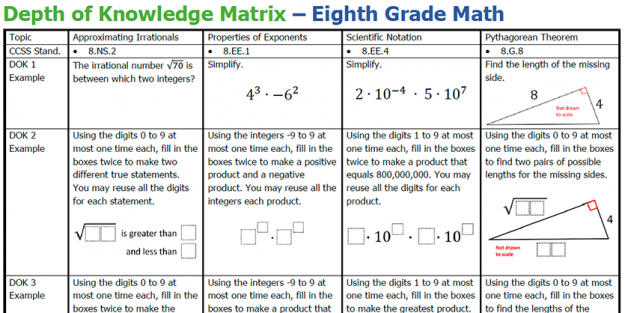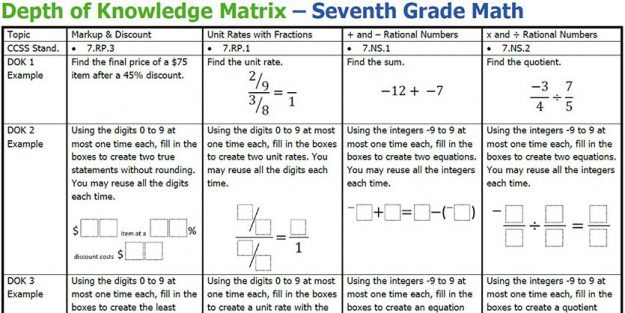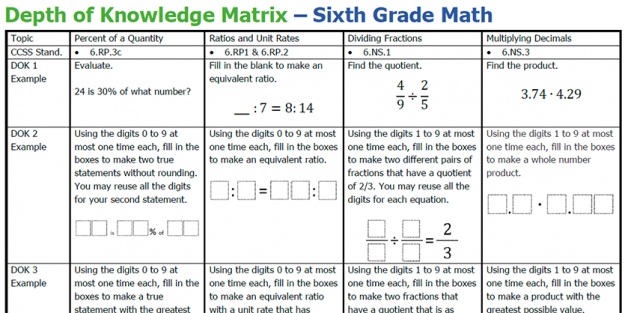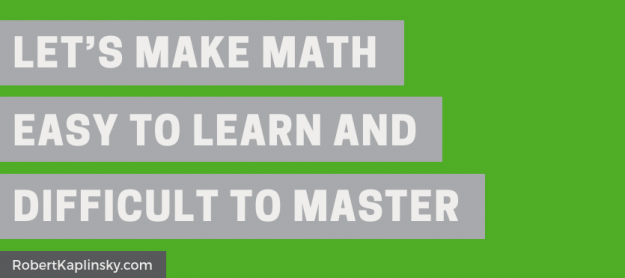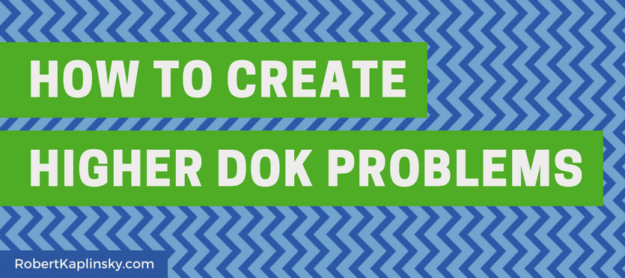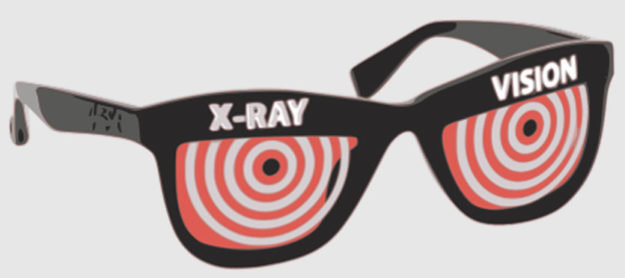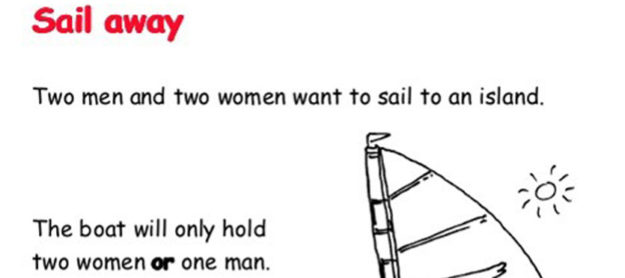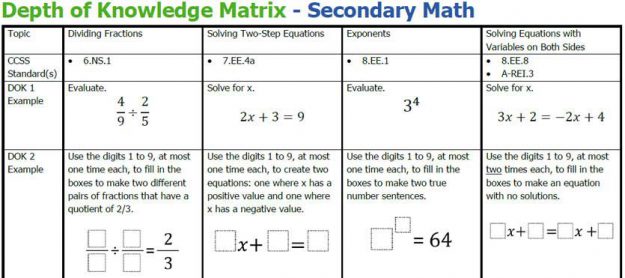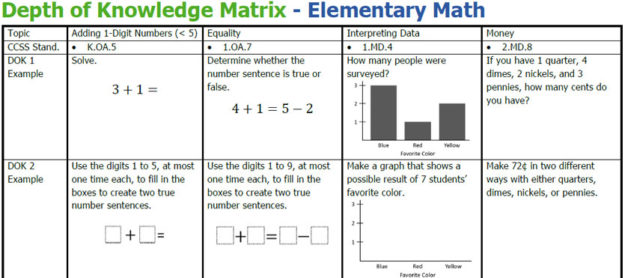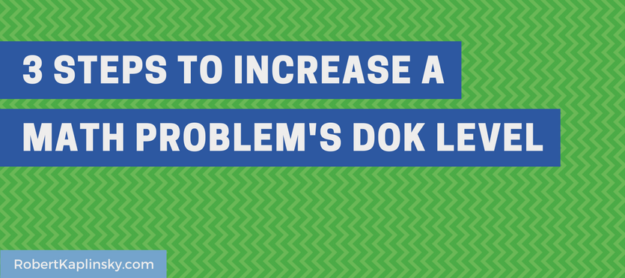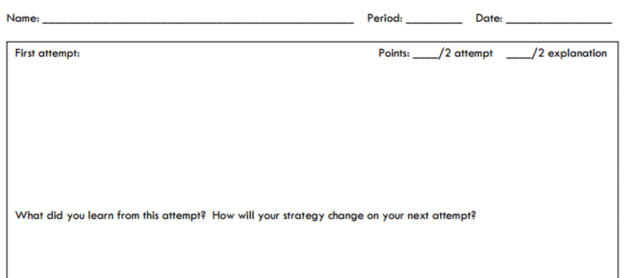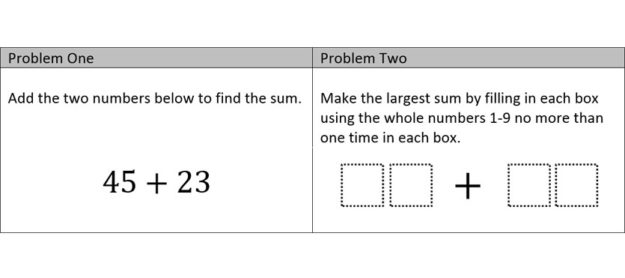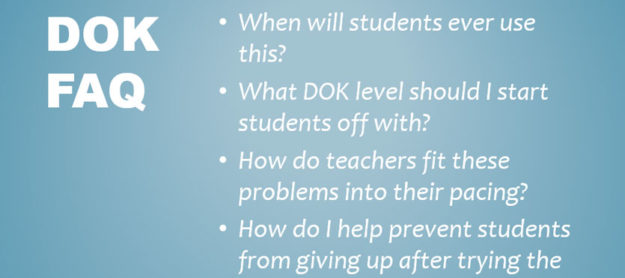Here’s my first attempt at articulating my thought process behind increasing a procedural problem’s Depth of Knowledge level. It’s not my intention to say that this is the only way to change the level. This is just one way. Also, I am only addressing the DOK level of the math content, not the conversation that students may have around the problem.
I’m starting out with something really basic: single operation problems. In an effort to make this applicable for a K-12 audience, my examples include addition, subtraction, multiplication, square root, exponents, and trigonometry. Clearly six problems won’t apply to every grade level, but I hope they are close enough to what you teach so that you can imagine a version you could use. Specifically, I want to discuss how to take a problem that is primarily a routine procedure and make it more rigorous.

